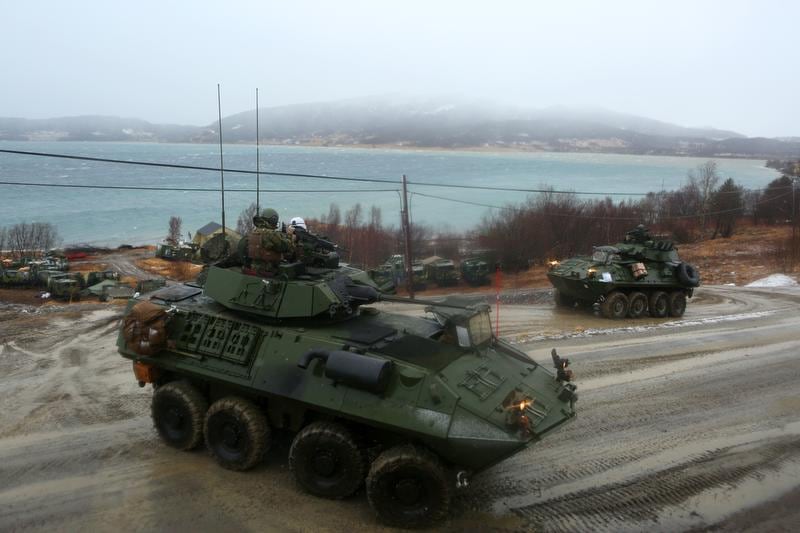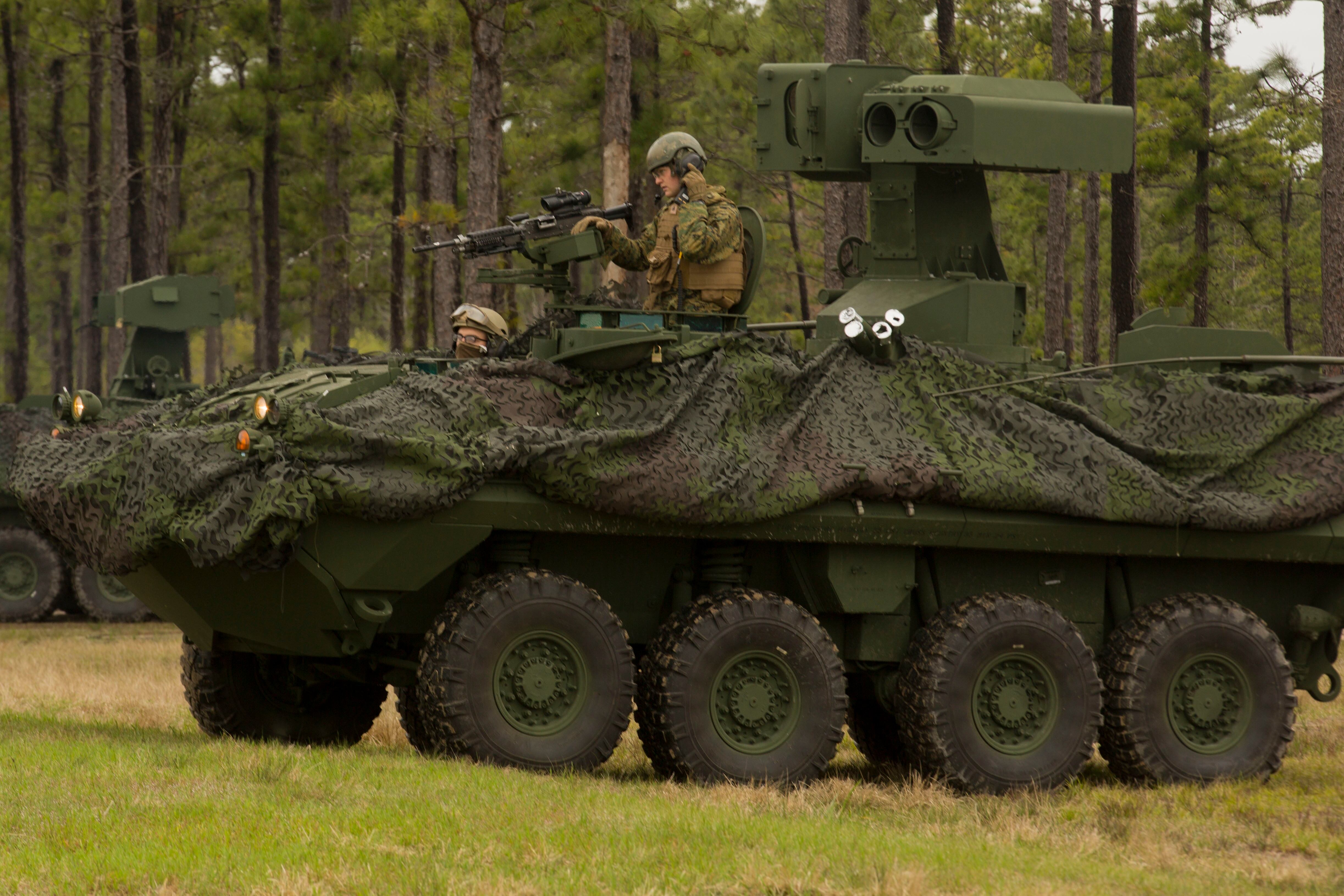The Corps’ Light Armored Vehicle, or LAV, has been rolling around since the 1980s and is still active across the force.
And now, the aging vehicle has recently been inducted as a museum piece.
The National Museum of the Marine Corps took delivery of an LAV-25 in December for inclusion in future galleries that are still under construction and expected to open at the end of 2019 or early next year, according to Gwenn Adams, a spokeswoman for the museum.
The Corps maintains a suite of aging legacy ground vehicles that are becoming outmatched on the modern battlefield, which has pushed the Corps to rapidly upgrade or replace its aging fleet.
The LAV remains one of the oldest vehicles still in use by the Corps, though still younger than the assault amphibious vehicle, or AAV, which is more than 40 years old.
But the Corps already has entered into a contract with BAE to replace its tracked AAV with the eight-wheeled amphibious combat vehicle, which will come with modern capabilities and weapon systems to help it survive in a future conflict.
The Corps has yet to pick a replacement for its LAV, but actively is on the hunt for one. It is known as the advanced reconnaissance vehicle, or ARV, and Corps officials have been tight-lipped about its development.
An official at the Office of Naval Research, the office overseeing the ARV project, said that it’s still ongoing, but couldn’t provide any details on the progress of the new armored vehicle.
The Corps did lay out some of its wish list for the new modern armored vehicle at an industry event in January 2018.
According to that briefing, the Corps is in search for a future LAV that can fight and survive in a highly contested environment — a battlefield the Corps could fight on as it competes with rising adversaries across the globe like Russia and China.

That means the ARV will need to come with a host of communications and networking equipment, electronic warfare and modern armaments to match more tech adept forces.
Briefing slides from the industry day event show the Corps wants its LAV to be able to jam, detect and carry out electronic warfare. It also wants the ARV to be able to control a swarm of drones.
And for fires, the new ARV could be armed with the XM813 30mm Bushmaster Cannon, according to Marine Corps briefing slides. Some Army Stryker vehicles have already fielded the 30mm weapon system.
Current Marine LAVs are equipped with the 25mm M242 Bushmaster chain gun.
As for size, the Corps appears to want the vehicle to stay roughly the same size, so that four vehicles can be transportable by the Navy’s Landing Craft Air Cushion.
Not much information is available about the Corps’ new ARV, and the slides from the industry day brief made publicly available are now a year old.
While the Corps waits to replace the legacy LAV, the aging vehicle has undergone a series of modernization efforts to boost its lethality and survivability.
One such upgrade armed the LAV with an automated turret system capable of firing TOW anti-tank guided missiles.

The model variant is known as the LAV-AT, and it just made its European debut as the Corps kicked off a massive training exercise in Norway, Trident Juncture, which kicked off late October 2018.
But the LAV wasn’t the only vehicle inducted into the museum in December. The National Museum of the Marine Corps also took delivery of the Oshkosh M-ATV — an all-terrain vehicle resistant to IEDs seen with U.S. service members operating in Iraq and Afghanistan.
That vehicle will be part of the historical gallery reflecting on the Corps’ participation in conflicts since 9/11.
“This spring we’ll open the continuation of our timeline, which will include our 9/11 exhibit, Marine families, transforming the Corps and more,” Adams said.
These galleries are part of the museum’s Final Phase project that will include historical galleries focusing on the Corps’ activities post-Vietnam War.
Shawn Snow is the senior reporter for Marine Corps Times and a Marine Corps veteran.





